#automated storage
Explore tagged Tumblr posts
Text
Basic automation refers to equipment and machines that help workers do basic, repetitive tasks. Examples include conveyor belts that transport goods from one station to another, barcode scanners for tracking inventory, and pick-to-light systems that use lights to direct workers to pick the right items. These are the tools that work together and not on their own but provide speed and accuracy to the manual process. Basic automation relieves human labor, decreases the likelihood of human error, and ensures productivity is maintained without the necessity for an entire redevelopment of warehouse infrastructure or processes.

0 notes
Text
Comprehensive Engineering Solutions with Little P.Eng.: Catalyzing Innovation Across Engineering
Engineering challenges in contemporary industry demand sophisticated, multidisciplinary approaches. Little P.Eng., a rising name in the engineering sector, has positioned itself as a nexus for solutions spanning various specialized fields, including structural engineering, piping design, piping stress analysis, seismic bracing design, storage tank design, material handling engineering services, pressure vessel design, electrical design, and CRN registration services. This article delves into each of these areas, highlighting the complexities, methodologies, and cutting-edge strategies employed by Little P.Eng. to cater to the evolving needs of diverse sectors.
Engineering services are the cornerstone of modern industrial and infrastructural developments. From the conceptualization of a project to its final commissioning, various engineering disciplines come into play to ensure functionality, safety, compliance, and efficiency. Little P.Eng., with its array of engineering services, has etched its mark by offering comprehensive solutions under one roof. The company's commitment to technical excellence, precision, and continual innovation positions it at the forefront of engineering consultancy.
Structural Engineering: Structural engineering, a critical subset of civil engineering, involves the analysis, design, and planning of structural components and systems to achieve design goals and ensure the safety and comfort of users or occupants. The experts at Little P.Eng. undertake detailed analyses, considering factors such as geology of the site, environmental conditions, and materials to be used, ensuring structural soundness against static and dynamic loading, including human traffic and environmental stressors.
The service spectrum includes:
Building Design: Erection of residential, commercial, and industrial structures with considerations for material efficiency, safety regulations, and aesthetic aspects.
Structural Analysis and Inspection: Employing advanced tools to analyze stress, strain, and load distribution and conducting inspections to assure structural integrity and longevity.
Foundation Design: Creating robust foundations, including piles, rafts, and footings, customized to site conditions and building requirements.
Retrofitting and Rehabilitation: Strengthening existing structures through modernization techniques, enhancing our capacity to withstand additional or unanticipated loads.
Piping Design and Piping Stress Analysis: Piping systems are lifelines of process industries, influencing operational efficiency, safety, and economic feasibility. Little P.Eng. offers comprehensive solutions in piping design, ensuring optimal layout and functionality, accommodating project constraints, and adhering to international standards.
Key aspects include:
Piping Layout and 3D Modeling: Developing detailed piping system layouts, incorporating equipment placement, structural design, and safety compliance, facilitated through advanced 3D modeling for accuracy and visualization.
Stress Analysis: Utilizing software tools like CAESAR II for precise stress analysis, determining strain and stress levels within piping systems under various scenarios, including temperature changes, fluid dynamics, pressure variations, and external forces, thereby verifying system reliability and identifying necessary supports and reinforcements.
Seismic Bracing Design: In regions prone to seismic activity, designing structures with adequate bracing is crucial to prevent collapse and minimize damage during earthquakes. Little P.Eng.'s seismic bracing designs are tailored to enhance the resilience of structures, factoring in regional seismic activity, local regulations, and material specifications.
Services involve:
Seismic Risk Evaluations: Assessing seismic risks associated with specific locations, analyzing historical data, and geological conditions.
Bracing System Design: Engineering customized bracing systems, including base isolators, cross-bracing, and shear walls, to dissipate seismic forces and minimize structural vulnerability.
Post-Earthquake Assessments: Inspecting and evaluating structures post-seismic activity for damage assessment and further reinforcement recommendations.
Storage Tank Design: Storage tanks, essential for industries requiring liquid or gas storage, entail specialized design parameters. Little P.Eng. focuses on custom solutions, factoring in the stored substance's characteristics, environmental considerations, and industry regulations.
The design process encompasses:
Material Selection and Design: Choosing appropriate materials resistant to the stored contents and environmental conditions, and designing tanks based on capacity requirements, pressure ratings, and structural regulations.
Foundation and Settlement Analysis: Ensuring ground stability and accommodating potential settlement or shifts without compromising tank integrity.
Safety and Emission Controls: Integrating features to prevent leaks, limit emissions, and safeguard against potential hazards, including explosions or toxic releases.
Material Handling Engineering Services: Efficient material handling is pivotal to operational success in manufacturing, warehousing, and distribution facilities. Little P.Eng. offers engineering solutions optimizing the movement, storage, control, and protection of materials throughout the process.
These services include:
System Design and Integration: Developing comprehensive systems combining conveyors, automated storage and retrieval systems, and transfer equipment, ensuring seamless, efficient operations.
Equipment Selection and Procurement: Advising on the appropriate equipment tailored to specific operational needs and assisting with acquisition from reputable manufacturers.
Safety and Ergonomics: Designing systems prioritizing operator safety and ergonomics, reducing workplace hazards and potential for injury.
Pressure Vessel Design: Pressure vessels, used for holding gases or liquids at high pressures, require meticulous design to prevent failure and catastrophic results. Little P.Eng.'s expertise lies in crafting pressure vessels compliant with industry standards like the ASME Boiler and Pressure Vessel Code.
Specific services involve:
Design and Analysis: Performing detailed calculations for wall thickness, stress distribution, and overall vessel geometry, ensuring safety under various pressure conditions.
Material Specification and Fabrication Oversight: Specifying suitable materials able to withstand extreme pressures and overseeing the fabrication process for quality assurance.
Inspection and Certification: Conducting thorough inspections and facilitating necessary certifications, confirming adherence to safety and operational standards.
Electrical Design: Electrical design services encompass the planning and execution of electrical systems, vital for the operational integrity of residential, commercial, and industrial projects. Little P.Eng.'s electrical engineers are adept at crafting systems that meet energy efficiency, safety, and performance standards.
Critical offerings include:
System Layout and Design: Creating comprehensive electrical systems, including power distribution, lighting, and emergency backup systems, tailored to specific project requirements.
Compliance and Safety: Ensuring designs meet electrical codes and safety standards, incorporating protective measures to prevent system failures, electrical shocks, or fire hazards.
Energy Efficiency Solutions: Proposing energy-efficient technologies and methodologies, contributing to sustainable and cost-effective operations.
CRN Registration Services: The Canadian Registration Number (CRN) is a number issued by each province or territory of Canada for the design of a boiler, pressure vessel, or fitting. The CRN identifies that the design has been accepted and registered for use in that province or territory. Little P.Eng. assists with the complex process of obtaining CRN certifications, essential for legal and safe operation within Canada.
This process includes:
Design Evaluations: Reviewing pressure equipment designs to ensure they comply with pertinent regulations and standards.
Documentation Preparation: Compiling and preparing extensive documentation required for CRN applications, including drawings, calculations, and material test reports.
Liaison with Authorities: Acting as an intermediary between clients and regulatory bodies, facilitating communication and expediting the registration process.
Conclusion: Little P.Eng. has emerged as a one-stop solution for diverse engineering needs, driven by a team of experts dedicated to upholding the highest standards of engineering excellence. Our approach is not just about meeting the minimum regulatory requirements; it is about designing safe, efficient, and sustainable systems that stand the test of time. By embracing advanced technologies, up-to-date methodologies, and a customer-centric approach, Little P.Eng. is setting new benchmarks in the engineering domain, contributing significantly to industrial innovation and infrastructural advancement.
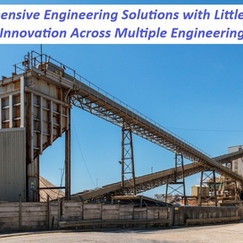

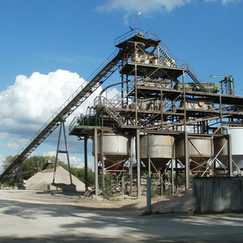


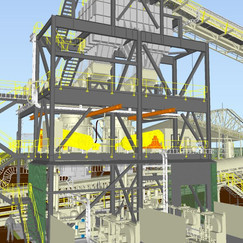
Tags:
CAESAR II
energy efficiency
structural engineering
material handling
3D modeling
safety standards
regulatory compliance
earthquake resilience
stress analysis
CRN registration
advanced technologies
engineering consultancy
fabrication oversight
rehabilitation
piping design
pressure vessel
project commissioning
retrofitting
electrical design
automated storage
operational excellence
system reliability
ASME compliance
seismic bracing
foundation design
storage tank
tank integrity
design evaluation
infrastructural advancement
industrial innovation
Engineering Services
Structural Engineering Consultancy
Pipe Stress Analysis Services
Located in Calgary, Alberta; Vancouver, BC; Toronto, Ontario; Edmonton, Alberta; Houston Texas; Torrance, California; El Segundo, CA; Manhattan Beach, CA; Concord, CA; We offer our engineering consultancy services across Canada and United States. Meena Rezkallah.
#CAESAR II#energy efficiency#structural engineering#material handling#3D modeling#safety standards#regulatory compliance#earthquake resilience#stress analysis#CRN registration#advanced technologies#engineering consultancy#fabrication oversight#rehabilitation#piping design#pressure vessel#project commissioning#retrofitting#electrical design#automated storage#operational excellence#system reliability#ASME compliance#seismic bracing#foundation design#storage tank#tank integrity#design evaluation#infrastructural advancement#industrial innovation
0 notes
Note
ooo you play starbound? I want to enjoy it but I always feel. guilty knowing what happened in development :( I wanna play really bad but then my brain is like 'SHOULD u?'
oh yeah the situation surrounding that entire debacle is absolute shitte. they fucked up big time. but also that situation has been and gone (and i hope they face intense scrutiny from there forward and don't repeat it) + the game itself is like... idk, maybe 10-20 hours worth of engagement and then you get bored? so people should nab it on sale if they're tempted, i'm not sure the base game is worth full price
but I play it with the frackin' universe mod set installed, which has skyrocketed my current gameplay up to 1000+ hours, multiple characters, and that as a mod set is run and handled by just a single absolutely insane guy not affiliated with chucklefish and all the mod editors managing all their stuff under its umbrella are (presumably? it's mods. it's voluntary) just doing this for fun. it's basically what Feed The Beast is to minecraft. complex as hell to figure out but they've made it easier for new people to get into lately. you can farm bees for rare resources. you can get bit to death by tiny tiny spiders. you can exploit the power of the universe to make your weird ugly gun you found in a pirate's shipping crate stronger. i went fishing in lava and a massive meteor landed on my head with precision accuracy and exploded my body into a fine mist. the crown my bird character is wearing whispers subliminal messages in my ears
so honestly even if chucklefish themselves have been a bit weird i already HAD the game when all that came out. and now i'm in it more for the fuckin amazing experience of this shitload more work done and available for free (besides the basegame) done by people who do this for fun and really just want people to play what they've done and tear their hair out over it. bc that will happen
#theres complex wiring and shit. my first automated storage happened at 700 hours bc im bad at learning that sort of stuff#it's the sort of expansion where you live in the wiki (miraheze. dont use fandom) for a month and emerge covered in blood#frackin universe#starbound
85 notes
·
View notes
Text
what should i build in my minecraft world i’m open to really dumb suggestions
#it’s survival but i’ll make it work#cherrycraft#i have a rollercoaster a Death Pillar™️ we have houses animal pens storage and farms#and a bear. don’t ask#the only thing i can’t make is automated farms#10piecetalks
47 notes
·
View notes
Text
Ganesh Shankar, CEO & Co-Founder of Responsive – Interview Series
New Post has been published on https://thedigitalinsider.com/ganesh-shankar-ceo-co-founder-of-responsive-interview-series/
Ganesh Shankar, CEO & Co-Founder of Responsive – Interview Series


Ganesh Shankar, CEO and Co-Founder of Responsive, is an experienced product manager with a background in leading product development and software implementations for Fortune 500 enterprises. During his time in product management, he observed inefficiencies in the Request for Proposal (RFP) process—formal documents organizations use to solicit bids from vendors, often requiring extensive, detailed responses. Managing RFPs traditionally involves multiple stakeholders and repetitive tasks, making the process time-consuming and complex.
Founded in 2015 as RFPIO, Responsive was created to streamline RFP management through more efficient software solutions. The company introduced an automated approach to enhance collaboration, reduce manual effort, and improve efficiency. Over time, its technology expanded to support other complex information requests, including Requests for Information (RFIs), Due Diligence Questionnaires (DDQs), and security questionnaires.
Today, as Responsive, the company provides solutions for strategic response management, helping organizations accelerate growth, mitigate risk, and optimize their proposal and information request processes.
What inspired you to start Responsive, and how did you identify the gap in the market for response management software?
My co-founders and I founded Responsive in 2015 after facing our own struggles with the RFP response process at the software company we were working for at the time. Although not central to our job functions, we dedicated considerable time assisting the sales team with requests for proposals (RFPs), often feeling underappreciated despite our vital role in securing deals. Frustrated with the lack of technology to make the RFP process more efficient, we decided to build a better solution. Fast forward nine years, and we’ve grown to nearly 500 employees, serve over 2,000 customers—including 25 Fortune 100 companies—and support nearly 400,000 users worldwide.
How did your background in product management and your previous roles influence the creation of Responsive?
As a product manager, I was constantly pulled by the Sales team into the RFP response process, spending almost a third of my time supporting sales instead of focusing on my core product management responsibilities. My two co-founders experienced a similar issue in their technology and implementation roles. We recognized this was a widespread problem with no existing technology solution, so we leveraged our almost 50 years of combined experience to create Responsive. We saw an opportunity to fundamentally transform how organizations share information, starting with managing and responding to complex proposal requests.
Responsive has evolved significantly since its founding in 2015. How do you maintain the balance between staying true to your original vision and adapting to market changes?
First, we’re meticulous about finding and nurturing talent that embodies our passion – essentially cloning our founding spirit across the organization. As we’ve scaled, it’s become critical to hire managers and team members who can authentically represent our core cultural values and commitment.
At the same time, we remain laser-focused on customer feedback. We document every piece of input, regardless of its size, recognizing that these insights create patterns that help us navigate product development, market positioning, and any uncertainty in the industry. Our approach isn’t about acting on every suggestion, but creating a comprehensive understanding of emerging trends across a variety of sources.
We also push ourselves to think beyond our immediate industry and to stay curious about adjacent spaces. Whether in healthcare, technology, or other sectors, we continually find inspiration for innovation. This outside-in perspective allows us to continually raise the bar, inspiring ideas from unexpected places and keeping our product dynamic and forward-thinking.
What metrics or success indicators are most important to you when evaluating the platform’s impact on customers?
When evaluating Responsive’s impact, our primary metric is how we drive customer revenue. We focus on two key success indicators: top-line revenue generation and operational efficiency. On the efficiency front, we aim to significantly reduce RFP response time – for many, we reduce it by 40%. This efficiency enables our customers to pursue more opportunities, ultimately accelerating their revenue generation potential.
How does Responsive leverage AI and machine learning to provide a competitive edge in the response management software market?
We leverage AI and machine learning to streamline response management in three key ways. First, our generative AI creates comprehensive proposal drafts in minutes, saving time and effort. Second, our Ask solution provides instant access to vetted organizational knowledge, enabling faster, more accurate responses. Third, our Profile Center helps InfoSec teams quickly find and manage security content.
With over $600 billion in proposals managed through the Responsive platform and four million Q&A pairs processed, our AI delivers intelligent recommendations and deep insights into response patterns. By automating complex tasks while keeping humans in control, we help organizations grow revenue, reduce risk, and respond more efficiently.
What differentiates Responsive’s platform from other solutions in the industry, particularly in terms of AI capabilities and integrations?
Since 2015, AI has been at the core of Responsive, powering a platform trusted by over 2,000 global customers. Our solution supports a wide range of RFx use cases, enabling seamless collaboration, workflow automation, content management, and project management across teams and stakeholders.
With key AI capabilities—like smart recommendations, an AI assistant, grammar checks, language translation, and built-in prompts—teams can deliver high-quality RFPs quickly and accurately.
Responsive also offers unmatched native integrations with leading apps, including CRM, cloud storage, productivity tools, and sales enablement. Our customer value programs include APMP-certified consultants, Responsive Academy courses, and a vibrant community of 1,500+ customers sharing insights and best practices.
Can you share insights into the development process behind Responsive’s core features, such as the AI recommendation engine and automated RFP responses?
Responsive AI is built on the foundation of accurate, up-to-date content, which is critical to the effectiveness of our AI recommendation engine and automated RFP responses. AI alone cannot resolve conflicting or incomplete data, so we’ve prioritized tools like hierarchical tags and robust content management to help users organize and maintain their information. By combining generative AI with this reliable data, our platform empowers teams to generate fast, high-quality responses while preserving credibility. AI serves as an assistive tool, with human oversight ensuring accuracy and authenticity, while features like the Ask product enable seamless access to trusted knowledge for tackling complex projects.
How have advancements in cloud computing and digitization influenced the way organizations approach RFPs and strategic response management?
Advancements in cloud computing have enabled greater efficiency, collaboration, and scalability. Cloud-based platforms allow teams to centralize content, streamline workflows, and collaborate in real time, regardless of location. This ensures faster turnaround times and more accurate, consistent responses.
Digitization has also enhanced how organizations manage and access their data, making it easier to leverage AI-powered tools like recommendation engines and automated responses. With these advancements, companies can focus more on strategy and personalization, responding to RFPs with greater speed and precision while driving better outcomes.
Responsive has been instrumental in helping companies like Microsoft and GEODIS streamline their RFP processes. Can you share a specific success story that highlights the impact of your platform?
Responsive has played a key role in supporting Microsoft’s sales staff by managing and curating 20,000 pieces of proposal content through its Proposal Resource Library, powered by Responsive AI. This technology enabled Microsoft’s proposal team to contribute $10.4 billion in revenue last fiscal year. Additionally, by implementing Responsive, Microsoft saved its sellers 93,000 hours—equivalent to over $17 million—that could be redirected toward fostering stronger customer relationships.
As another example of Responsive providing measurable impact, our customer Netsmart significantly improved their response time and efficiency by implementing Responsive’s AI capabilities. They achieved a 10X faster response time, increased proposal submissions by 67%, and saw a 540% growth in user adoption. Key features such as AI Assistant, Requirements Analysis, and Auto Respond played crucial roles in these improvements. The integration with Salesforce and the establishment of a centralized Content Library further streamlined their processes, resulting in a 93% go-forward rate for RFPs and a 43% reduction in outdated content. Overall, Netsmart’s use of Responsive’s AI-driven platform led to substantial time savings, enhanced content accuracy, and increased productivity across their proposal management operations.
JAGGAER, another Responsive customer, achieved a double-digit win-rate increase and 15X ROI by using Responsive’s AI for content moderation, response creation, and Requirements Analysis, which improved decision-making and efficiency. User adoption tripled, and the platform streamlined collaboration and content management across multiple teams.
Where do you see the response management industry heading in the next five years, and how is Responsive positioned to lead in this space?
In the next five years, I see the response management industry being transformed by AI agents, with a focus on keeping humans in the loop. While we anticipate around 80 million jobs being replaced, we’ll simultaneously see 180 million new jobs created—a net positive for our industry.
Responsive is uniquely positioned to lead this transformation. We’ve processed over $600 billion in proposals and built a database of almost 4 million Q&A pairs. Our massive dataset allows us to understand complex patterns and develop AI solutions that go beyond simple automation.
Our approach is to embrace AI’s potential, finding opportunities for positive outcomes rather than fearing disruption. Companies with robust market intelligence, comprehensive data, and proven usage will emerge as leaders, and Responsive is at the forefront of that wave. The key is not just implementing AI, but doing so strategically with rich, contextual data that enables meaningful insights and efficiency.
Thank you for the great interview, readers who wish to learn more should visit Responsive,
#000#adoption#agents#ai#AI AGENTS#ai assistant#AI-powered#amp#Analysis#approach#apps#automation#background#billion#CEO#Cloud#cloud computing#cloud storage#collaborate#Collaboration#Community#Companies#comprehensive#computing#content#content management#content moderation#courses#crm#customer relationships
7 notes
·
View notes
Text
the fact that i have almost a year of retail experience (and am quite good at it too) and only got a response from 1 out of 30 places i applied to is crazy
we truly live in a society
2 notes
·
View notes
Text
a gorgeous woman named New Voicemail won't stop calling me
7 notes
·
View notes
Text
#solar panels#renewable#renewable resources#solar cell#solar panel#solar energy#solar cells#instrumentation#green energy#automation#energy storage#wind ensemble#renewable energy#solar power#solar system#solarpower#solar pv#solar products
4 notes
·
View notes
Text
Declutter Your Digital Life: 3 Simple Steps to Organize Your Photos and Documents
From blurry selfies to forgotten tax forms, digital clutter can weigh you down like a backpack filled with bricks. But fear not! This guide is your roadmap to a streamlined, stress-free digital space. So grab your virtual broom and prepare to reclaim your
Declutter Your Digital Life: Is your phone bursting with blurry photos of your cat? Does your computer desktop resemble a digital landfill? Fear not, fellow internet dweller! Today, we’re diving into the art of decluttering your digital life, specifically focusing on those photo and document mountains weighing you down. Declutter Your Digital Life: 3 Simple StepsStep 1: The Great Sorting Spree –…

View On WordPress
#declutteryourdigitallife#digitalminimalist#organizeyourphotos#tamethechaos#automation#backup#cloud#cloud storage#declutter#digital decluttering#digital organization#digital wellness#digital zen#document management#documents#Efficiency#file backup#files#living simply#Marie Kondo#Minimalism#organizing#peace of mind#photo organizing#photos#Productivity#steps#stress relief#Time Management#tips
4 notes
·
View notes
Text

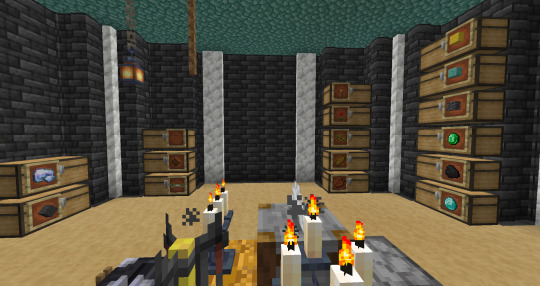
The hermits keep complaining about storage so I wanted to show off my starter storage that so far has been absolutely enough and even has room to expand and I'm at level 18! I don't know how they have such trouble with this, but I also love sorting everything xP
#vault hunters#modded minecraft#yeah there's absolutely a lot of stuff in this modpack#like wow#but just... make a storage that's more than 5 chests#it's not that hard xD#I started building this when I was level 3 I think???#it's a skyvaults world so I had to run a vault before I could start building ;_;#I'm serious about loving to sort the stuffs#on the realm we have 4 chests where everyone can just dump random stuff in when they don't have energy to sort it#(we don't have an automated storage)#and then I just go through it at the end of every play-session and put everything away :3 (I guess that makes me the automated storage)#I want to join hcvh so bad ONLY to take care of everyones' chestmonsters#but it IS also fun to see how they all solve it in their own ways :3#anyway I'm rambling I just wanted to show this#I have unlocked drawers now tho (even if only because of the soul diffuser) so I might get started on the bigger storage#unless I decide to keep working on the mobfarm we'll see
3 notes
·
View notes
Text
things i need to remember to do in 2024: get some computer backup software
#//juri speaks#i don't necessarily need something that goes to cloud storage#i just want to automate the copying new stuff/changed folder structures to an external hdd
2 notes
·
View notes
Text
🥴 i just wanna backup my ipad like manually .. the concept is simple but the process is like. apparently impossible. u cant just plug it in to ur laptop and get ur stuff
#i bought a usb specifically for iThings but its being annoying too#i thought it was gonna be just a normal usb i can put stuff on .. not a prettied up automated Photo Storage app#just wanna click n drag or whatever
2 notes
·
View notes
Text
What are the latest warehouse automation technologies?
Gone are the days of manual labour and static, inefficient operations. Today, we stand at the forefront of a revolution driven by the latest warehouse automation technologies. These innovations reshape how businesses handle inventory, fulfil orders, and optimize supply chains.
From autonomous robots and artificial intelligence to the Internet of Things (IoT) and advanced data analytics, we'll explore how these technologies enhance efficiency, reduce costs, and ensure seamless operations in modern warehouses.
1-Robotic Process Automation (RPA): RPA involves using software robots to automate repetitive tasks like data entry, order processing, and inventory tracking. The robots interact with various systems and applications to streamline workflows.
2-Autonomous Mobile Robots (AMRs): Robotic vehicles called AMRs navigate and operate in warehouses without fixed infrastructure, such as conveyor belts or tracks. They perform tasks like picking, packing, and transporting goods.
3-Automated Guided Vehicles (AGVs): AGVs are similar to AMRs but typically follow fixed paths or routes guided by physical markers or magnetic tape. They are commonly used for material transport in warehouses and distribution centres.
4-Goods-to-Person Systems: This approach involves bringing the items to the workers rather than having workers travel throughout the warehouse to pick items. Automated systems retrieve and deliver goods to a workstation, reducing walking time and improving efficiency.
5-Automated Storage and Retrieval Systems (AS/RS): AS/RS systems use robotics to store and retrieve items from racks or shelves automatically. These systems can significantly increase storage density and optimize space utilization.
6-Collaborative Robots (Cobots): Cobots are designed to work alongside human workers. They can assist with tasks like picking, packing and sorting, enhancing efficiency and safety.
7-Warehouse Management Systems (WMS): While not a physical automation technology, modern WMS software uses advanced algorithms and AI to optimize inventory management, order fulfilment, and warehouse processes.
8-Vision Systems and Machine Learning: Computer vision technology combined with machine learning can be utilized for tasks such as object recognition, inventory movement tracking, and quality control.
9-IoT and Sensor Networks: Internet of Things (IoT) devices and sensors collect real-time data on inventory levels, environmental conditions, equipment health, and more, enabling better decision-making and predictive maintenance.
10-Voice and Wearable Technologies: Wearable devices and voice-guided picking systems can provide workers with real-time information and instructions, improving accuracy and efficiency.11-Automated Packaging Solutions: These systems automate the packaging process by selecting the appropriate box size, sealing packages, and applying labels, reducing manual labour and ensuring consistent packaging quality.
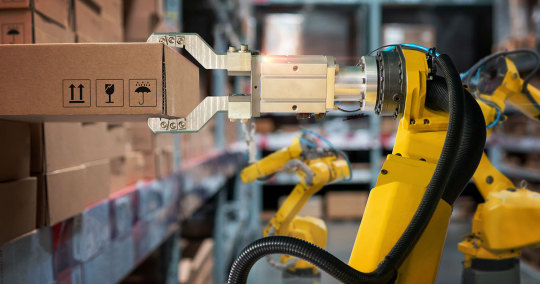
1 note
·
View note
Text
How Automated Data Archiving and Offline Storage Systems Protect Your Digital Assets?
In today's digital world, data is more precious than ever — and more at risk. With the growing threats of cyberattacks, unintentional data loss, and digital decay, protecting your digital assets is no longer a choice. For governments, organizations, and even individuals working with sensitive data, maintaining a strong solution for data archiving and offline storage is now a strategic imperative.
Step into the realm of Automated Data Archiving and offline storage solutions — new technology that is revolutionizing how we manage, secure, and store data for long-term preservation.
Why Long-Term Data Storage Is Important
Every click, transaction, and communication nowadays leaves a digital trail. From financial records, legal documents, medical reports, research information, or digital data storage for compliance, the requirement to maintain data for years — or decades — is the norm today.
But with technology changing relentlessly, saving files in a hard disk or cloud storage is no longer sufficient. You require long-term data storage solutions that make data accessible, secure, and complete — regardless of how old it becomes.
What is Automated Data Archiving?
Automated Data Archiving is the process of locating digital data — particularly data that is no longer in active use — and automatically relocating it to a safe archive. This takes pressure off your live systems while keeping valuable information safely stored and accessible.
Rather than doing it manually by transferring files and folders, these systems run in the background and archive according to rules such as file age, size, or frequency of access.
Not only does this automation save time and effort, but it also minimizes the likelihood of human error, making your secured data storage system more trustworthy.
The Role of Offline Storage in Data Security
Although cloud-based tools are convenient, they are also susceptible to perpetual online threats — hacking, ransomware, and even accidental overwrites. This is why offline data storage is now so important.
By having a copy of your data stored offline, you significantly lower the possibility of outside attacks. This sort of offline data protection is particularly beneficial to cold data storage — data that's only scarcely touched but needs to be saved in case of regulatory, legal, or business continuity purposes.
Offline storage is perfect for:
Archived legal documents
Historical customer information
Financial and audit trails
Scientific or academic research repositories
Sensitive digital records storage
Cold Data Storage: The Quiet Watchdog
Not all data has to be available right away. Actually, most organizational data goes inactive within a matter of months. But that doesn't equate to disposability. That is cold data — data that has to be kept around but doesn't require immediate access.
Cold storage data solutions are built expressly for this kind of data. They provide low-cost, high-security data storage for archiving data that might get accessed rarely — or perhaps not at all.
This makes them ideal for long-term preservation of digital proof, contracts, or old project documents.
Advantages of Automated Data Archiving and Offline Storage Systems
1. Enhanced Data Security
Paying files offline or cold storage takes them out of the immediate online danger zone. Your data is secure from cyberattacks, malware, and accidental loss.
2. Regulations Compliance
Numerous industries have digital evidence storage and data storage and archiving systems that must comply with certain legal requirements. The process being automated makes sure you never fall short of a requirement.
3. Cost Savings
Archived information doesn't have to reside on pricey high-speed servers. Off-line or cold storage reduces costs significantly without sacrificing security.
4. Scalability
As your information expands, so does your archive. Current data archiving and off-line storage systems are capable of expanding to accommodate terabytes — even petabytes — of data with ease.
5. System Performance Optimization
By relocating inactive data from your active system, you reclaim space and enhance performance for your normal operations.
Selecting the Right Solution
Not all data is created equal — and neither are all storage requirements. The right system will most likely blend automated data archiving with online and offline data storage, striking an equilibrium between accessibility and safeguarding.
Search for features such as:
Policy-based rules for archiving
Encryption and access control
Redundant backups
Offline access protocols
Integration with compliance standards
Collaborating with the correct data archiving and storage systems vendor ensures that your configuration adapts to your requirements — not against them.
Final Thoughts
In 2025 and beyond, digital security isn't so much about firewalls and passwords. It's about having the proper data lifecycle strategy. As the amount of information continues to balloon, automated data archiving and offline storage systems are becoming a necessity for those who take digital asset protection seriously.
If you're working with sensitive documents, governed data, or mission-critical digital information, it's the wise investment to make in long-term storage that incorporates offline data protection.
Because when it comes to data, what you hold back — and how you hold on — can determine your future.
Are your digital assets really secure?
It's time to rethink storage. Select a solution that's not only smart, but future-ready
#Automated Data Archiving#data archiving and offline storage#offline data storage#cold data storage#secured data storage#digital evidence storage#offline data security#long-term data storage#data archiving and storage systems
0 notes
Text
Meet the AMR Robot: The Smart Teammate Revolutionizing Warehouses
In today’s hyperconnected, fast-paced world of e-commerce and just-in-time manufacturing, warehouses have evolved into strategic nerve centers. No longer just spaces to stash goods, they’re critical hubs that can make or break a business’s ability to deliver quickly, efficiently, and profitably. At the heart of this warehouse revolution stands a sleek, smart, and tireless teammate: the AMR robot, or Autonomous Mobile Robot.
The Rise of the AMR
Gone are the days of bulky machines tied to rails or conveyor belts. Today’s AMRs are nimble, autonomous, and surprisingly intelligent. Using a mix of advanced sensors, real-time mapping, and onboard AI, these robots can independently navigate complex warehouse layouts. They can identify and avoid obstacles, reroute in case of congestion, and reach their destinations without needing fixed paths or constant human intervention.
Think of them as the self-driving cars of the warehouse world—only quieter, more efficient, and trained to never break the speed limit.
A New Age of Warehouse Handling Equipment
When it comes to warehouse handling equipment, the AMR robot is a category-defining marvel. Traditionally, equipment like forklifts, conveyor systems, and pallet jacks required skilled operators and constant supervision. That meant higher labor costs, increased chances of human error, and limitations in scaling during peak demand seasons.
Enter the Autonomous Mobile Robot—a compact, battery-powered solution that works 24/7 without fatigue. Whether it’s moving raw materials to production lines, picking customer orders from shelves, or transporting finished goods to loading docks, AMRs handle it all with unshakable precision.
The result? Fewer mistakes, faster cycle times, and more efficient warehouse operations.
A Teammate, Not a Replacement
A big concern with automation has always been the fear of replacing human workers. But the beauty of AMRs lies in their collaborative nature. These robots are designed to work alongside people, not in place of them. While the AMR robot tackles repetitive, physically taxing, and time-consuming tasks, human workers can focus on strategic responsibilities—like quality control, equipment maintenance, or optimizing processes.
This collaboration between humans and machines boosts morale at work in addition to productivity. No more exhausting journeys via enormous warehouses or back-breaking lifting. Workers instead take on the role of overseers of efficiency and operators of intelligent systems.
The reasons everyone is discussing AMRs
AMRs are receiving a lot of attention in the industrial and logistics industries for a reason. They are enticing to contemporary businesses because of the following main advantages:
Adaptability: AMRs are easily reconfigurable, in contrast to typical automation systems that need established infrastructure. With minimal downtime, you may scale operations, modify workflows, and adjust to new layouts.
Rapid Deployment: Since AMRs are not reliant on predetermined routes or tracks, they may be deployed rapidly. This is very helpful for businesses that are seasonal or growing rapidly.
Smart Navigation: AMRs navigate through dynamic environments, including those shared with people and forklifts, with confidence by utilising technology such as LiDAR, SLAM (Simultaneous Localisation and Mapping), and obstacle recognition.
Data-Driven Operations: AMRs produce a lot of data, including route efficiency and journey times. This knowledge can enhance overall operational effectiveness and optimize warehouse layouts.
Safety First: With sensors and integrated safety procedures, AMRs lower the possibility of mishaps, making them a reliable component of contemporary warehouse handling machinery.
Not only for storage facilities
Autonomous Mobile Robots are becoming more and more popular in a wide range of other settings, even though they excel in warehouses. They deliver lab samples and medications to hospitals. They manage security and baggage at airports. They oversee the replenishment of goods in shop backrooms. Because of their versatility, they can be used in any facility that has to move items precisely and repeatedly.
Bottom-Line Enhancers
Although the technology is impressive, what about the ROI?
AMRs save money over time in a number of ways. They minimise downtime from fatigue or absence and reduce workforce expenses by minimising reliance on human labour. Their accuracy reduces order errors and product damage. Additionally, businesses benefit from improved service levels and quicker turnaround times due to their ability to work continuously.
Determine the difference between AMR and AGV
AMRs and AGVs (Automated Guided Vehicles) are frequently confused in the automation field. Although they are both utilised for material transportation, their navigational strategies differ significantly.
AGVs are dependent on fixed pathways, such as implanted wires, magnetic strips, or QR codes. They halt and wait for anything to move out of their way. AMRs, however, are more intelligent. They avoid obstacles, adjust to shifting conditions, and plot routes dynamically using onboard intelligence.
Because they offer flexibility and scalability that conventional automated guided vehicles just cannot, AMRs are sometimes regarded as the next generation of AGVs.
What will happen to AMRs next?
The capabilities of the AMR robot will advance in tandem with advancements in robotics, artificial intelligence, and warehouse management systems. Better object detection, collaborative arms for choosing, and even machine learning-based route optimisation are possible features of future versions.
And we may anticipate seeing these robots in mid-sized and even small businesses, not just the major players, as they become more widely available and reasonably priced.
It could be time to consider when, rather than if, you will implement AMRs if you work in manufacturing, logistics, or any other industry that requires moving materials. Because neither your customers nor the future are waiting.
0 notes
Text
ZeaCloud® Public Cloud – Scalable & Secure IaaS Solutions
ZeaCloud® offers automated, pay‑as‑you‑go Infrastructure‑as‑a‑Service (IaaS) based in New Delhi. Enjoy scalable storage, networking, and compute powered by NVMe and virtualization, with 24×7 AI‑augmented support and simplified self‑service interfaces. Ideal for enterprises seeking reliable, cost‑effective cloud transformation. for more details visit: Zeacloud- Public Cloud Page
#Public Cloud#Infrastructure as a Service (IaaS)#Scalable Cloud Solutions#Pay‑as‑you‑go Cloud#NVMe Storage#Managed Cloud Services#Automated Cloud Infrastructure#24×7 Cloud Support#Virtualization#Self‑Service Cloud Dashboard#ZeaCloud#Cloud in New Delhi#Secure Cloud Hosting
0 notes